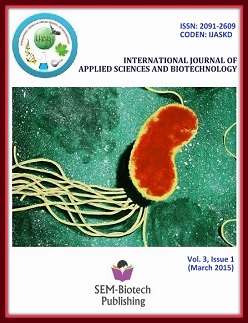Status of Thyroid Disorders in Central Nepal: A Tertiary Care Hospital Based Study
DOI:
https://doi.org/10.3126/ijasbt.v3i1.12218Keywords:
Thyroid Disorders, iodine deficiency, hypothyroidismAbstract
Background: Nepal is a Himalayan, landlocked country surrounded by India and China. It is endemic for iodine deficiency disease. Thyroiddysfunction is major health problem among the Nepalese people. Its prevalence increases with age. Screening of thyroid disease is advised inhigh risk population. Objectives: To find out the prevalence of thyroid dysfunction among subjects who attended Biochemistry Departmentof Tribhuwan University Teaching Hospital, Kathmandu, Nepal. Material and Methods: This is a hospital based retrospective studyconducted in the Department of Biochemistry Tribhuwan University Teaching Hospital, Institute of Medicine. This study was designed toinvestigate status of thyroid dysfunction in central Nepal. A total of 5230 cases from all over Nepal were studied in a single year. Blood sampleswere collected, serum separated and thyroid hormones (fT3, fT4 and TSH) were assayed by Vitros ECIQ analyser Ortho Clinical DiagonosticsUSA. Result and discussion: Among 5230 subjects prevalence of thyroid dysfunction was 29.0% with subclinical hypothyroidism17%,hypothyroidism 8%, hyperthyroidism 3%, subclinical hyperthyroidism1% and euthyroidism 71%.Higher prevalence was seen in the age group31-45. Conclusion: This study revealed that subclinical and overt hypothyroidism is preponderant followed by sub clinical hyperthyroidism.Females are more vulnerable to the thyroid dysfunction. Since it is a hospital based study, the prevalence of thyroid dysfunction may not beapplicable. So an extensive demographic survey should be done to provide accurate data of thyroid dysfunction in the general population
DOI: http://dx.doi.org/10.3126/ijasbt.v3i1.12218
Int J Appl Sci Biotechnol, Vol. 3(1): 119-122




